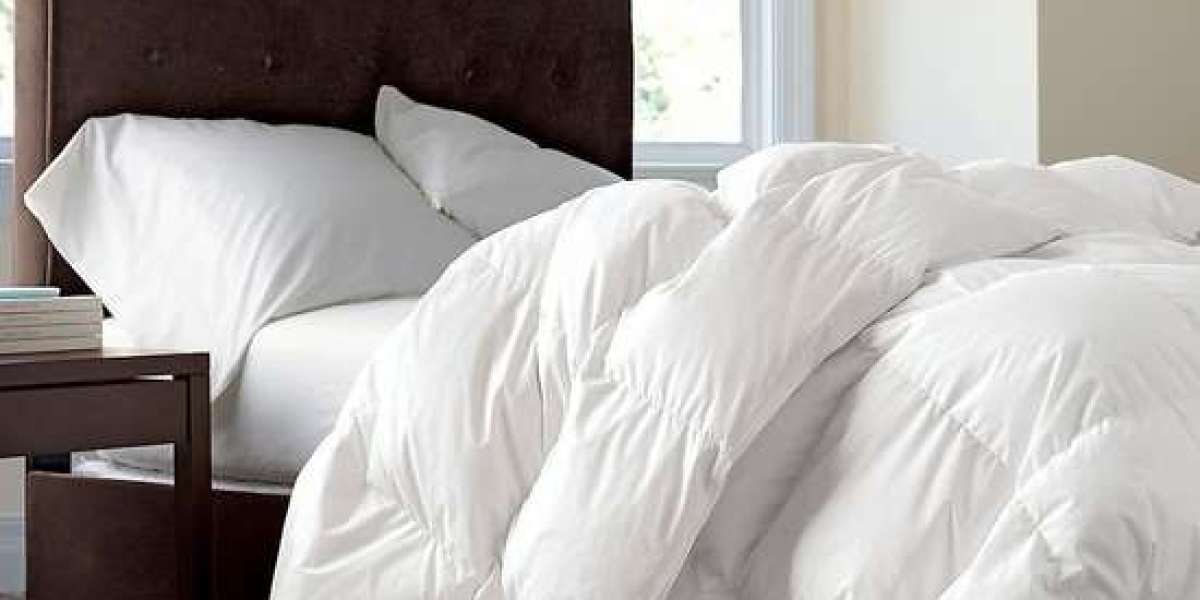A down comforter is a luxurious bedding essential filled with the soft, fluffy undercoating of ducks or geese feathers. Its exceptional insulation creates a lightweight, cozy cocoon of warmth for a restful night's sleep. The choice of fill power, size, and construction ensures a perfect match for every sleeper's preferences and needs.
When it comes to achieving a comfortable and cozy night's sleep, one of the essential factors to consider is your choice of bedding. Among the various options available, a down comforter stands out as a luxurious and warm choice. However, not all down comforters are created equal, and selecting the perfect one for your bed can be a daunting task. In this comprehensive guide, we'll walk you through everything you need to know to make an informed decision and ensure a restful night's sleep.
Benefits of Down Comforters
- Exceptional Insulation: Down clusters create thousands of tiny air pockets that trap warmth, making down comforters incredibly efficient at retaining heat.
- Lightweight Comfort: Despite their warmth, down comforters are remarkably lightweight, providing a snug, cozy feeling without feeling heavy.
- Longevity: High-quality down comforters can last for many years, making them a wise investment in your sleep quality.
Now that we've established the advantages of down comforters, let's explore the key factors to consider when selecting the perfect one for your bed.
Fill Power: The Measure of Quality
Fill power is a crucial metric when assessing the quality of a down comforter. It measures the volume that one ounce of down occupies in cubic inches. The higher fill power indicates loftier and more insulating down. Generally, fill power can range from 600 to 800+, with higher numbers indicating superior quality.
If you live in a colder climate or prefer a warmer comforter, opting for a higher fill power is recommended before you buy a down comforter. However, for those in milder climates or who tend to overheat while sleeping, a lower fill power may be more suitable.
Thread Count: Balancing Durability and Softness
Thread count is a measure of the fabric's density and is usually associated with cotton sheets. When choosing a down comforter, it's essential to find a balance between thread count and the comforter's overall softness.
A higher thread count can make the fabric softer and more durable, but it may also reduce the comforter's breathability. For most people, a thread count between 300 and 400 is a good compromise, providing both comfort and longevity.
Size Matters: Choosing the Right Dimensions
Selecting the correct size for your down comforter is crucial for achieving an aesthetically pleasing and comfortable bed. Always consider the dimensions of your mattress and the desired look for your bedding.
Standard sizes include twin, full/queen, and king. If you have a queen-sized bed, you can opt for a full/queen comforter, but if you prefer an oversized look, a king-sized comforter might be a better fit.
Construction: Baffle-Box vs. Sewn-Through
The construction of a down comforter plays a significant role in its performance. There are two primary types: baffle-box and sewn-through.
- Baffle-Box Construction: This design features small fabric walls sewn between the top and bottom layers of the comforter. These walls create individual compartments, or boxes, that hold them down in place. Baffle-box construction allows for a more even distribution of down and prevents it from shifting, ensuring consistent warmth.
- Sewn-Through Construction: In this design, the top and bottom layers of the comforter are stitched together in a grid-like pattern, creating pockets for the down. While sewn-through comforters are often more affordable, they may experience some cold spots as the down can shift within the pockets.
Allergies and Ethical Considerations
If you have allergies or ethical concerns about using animal products, you might want to consider alternative options such as synthetic down or cruelty-free down. These options provide similar warmth and comfort without the use of animal byproducts.
Maintenance and Care
To ensure your down comforter's longevity, it's essential to follow proper care instructions. Most down comforters are machine washable, but you should use a gentle cycle with a mild detergent. Regularly fluffing your comforter and allowing it to air out can help maintain its loft and freshness.
Conclusion
Selecting the perfect down comforter for your bed involves considering factors like fill power, thread count, size, construction, allergies, and ethical concerns. By taking the time to assess your specific needs and preferences, you can make an informed decision that leads to years of comfortable and restful nights.
Investing in a high-quality down comforter is an investment in your sleep quality, and with the knowledge gained from this guide, you're well on your way to enjoying the ultimate level of comfort and warmth in your bed.



